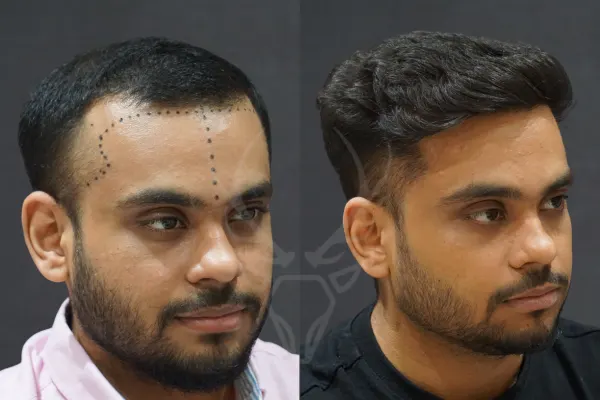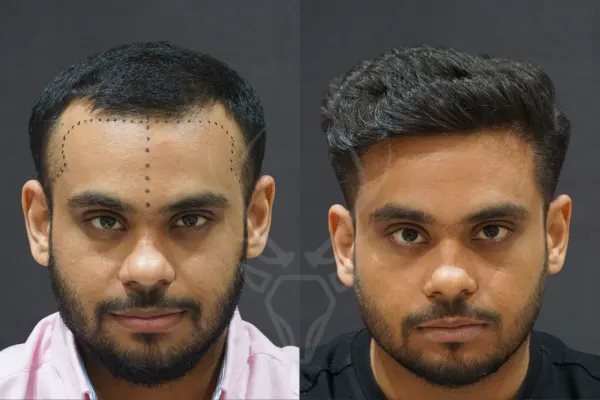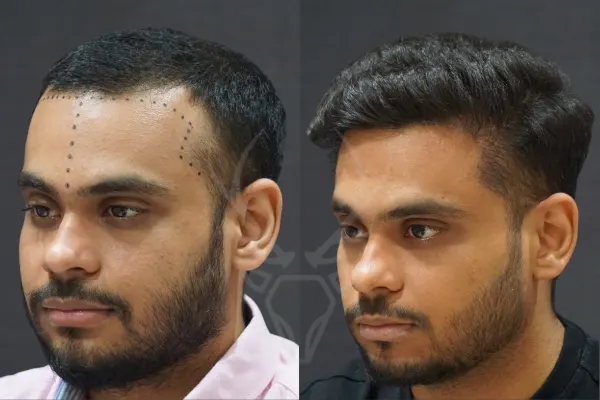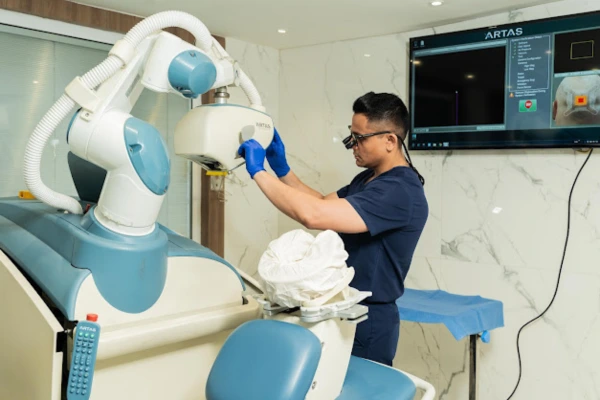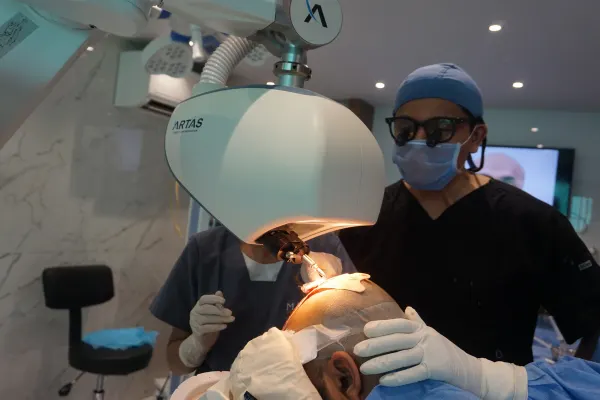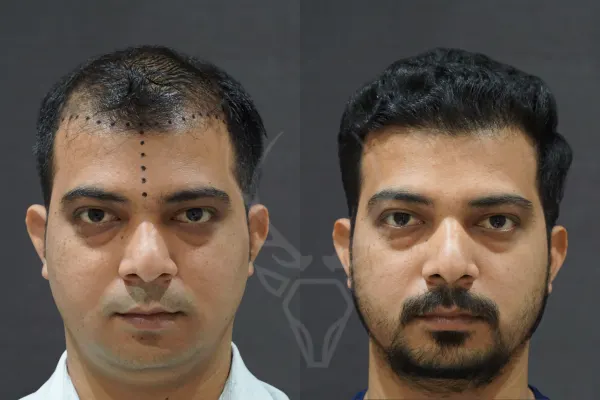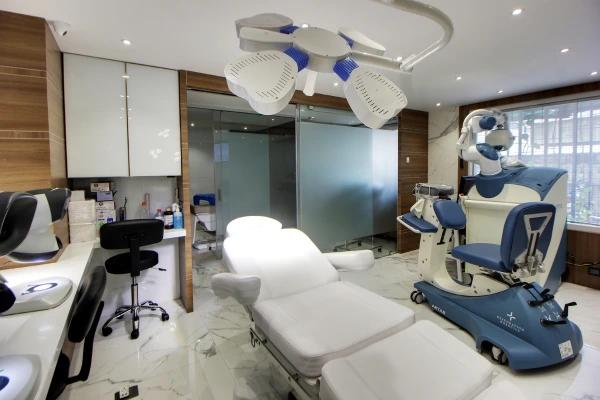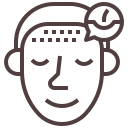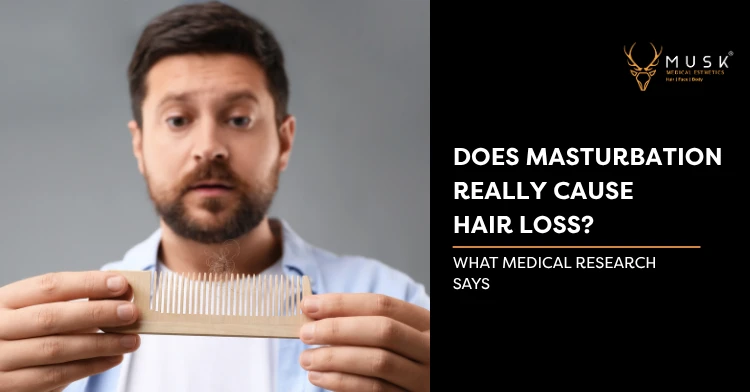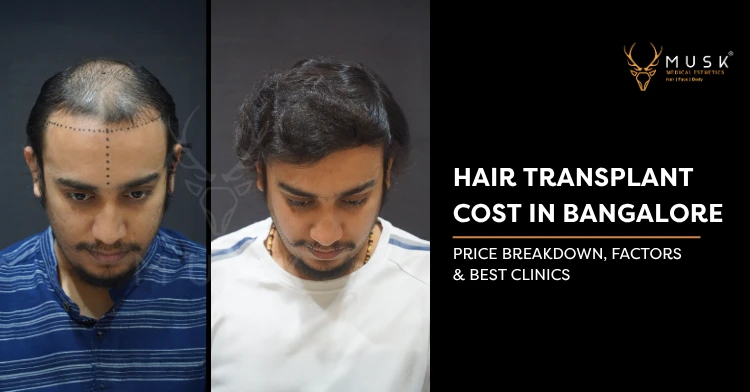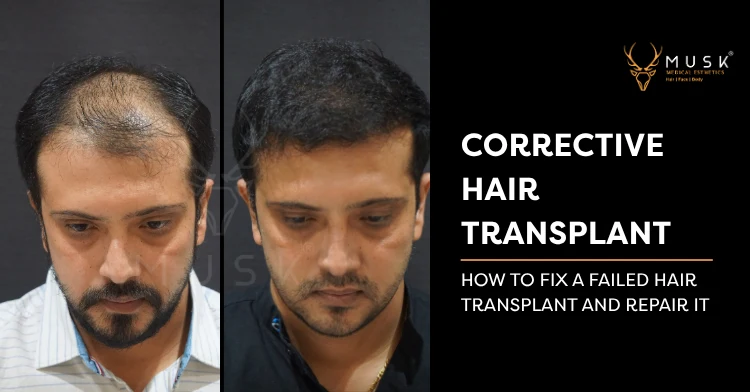Best Temple Hair Transplant in India
What is Temple Hair Transplant?
A Temple Hair Transplant is a highly specialized surgical procedure designed to restore hair to the temples—the triangular or recessed areas on the sides of your forehead. This delicate procedure is crucial for framing the face and creating a balanced, youthful hairline.
The process involves carefully transplanting healthy hair follicles from a donor area (typically the back of the head) to the thinning temple regions. The goal is not just to add hair, but to do so with artistic precision, ensuring the final result looks completely natural and complements your facial structure.
Before & After Images (Temple Hair Transplant)
Factors Affecting Temple Points
Temple recession is often one of the earliest signs of hair loss. Several factors contribute to why these specific areas are affected.
What are the Benefits of a Temple Hair Transplant?
Restoring your temple points can have a profound impact on your appearance and confidence. The key benefits include:
Creates a Youthful Frame
Strong temple points are a hallmark of a youthful hairline. Restoring them instantly helps to frame your face and reduce the appearance of a high or receding hairline.
Provides a Permanent Solution
The transplanted hair follicles are harvested from areas genetically resistant to balding, so they will continue to grow naturally for a lifetime in their new location.
Boosts Appearance & Confidence
Achieving better facial balance with a well-defined hairline can dramatically improve your overall appearance and give a significant boost to your daily self-confidence.
Requires Low Maintenance
Once the initial healing is complete, your newly transplanted temple hair grows naturally and does not require any special products or care beyond regular washing and styling.
Ensures Natural-Looking Results
An expert surgeon meticulously places each graft to match the unique angle and direction of natural temple hair, making the results completely undetectable to others.
Safe Procedure & Minimal Downtime
Modern FUE techniques are minimally invasive and performed under local anesthesia, ensuring a safe procedure with a quick and comfortable recovery period.
Informative Videos about Hair Transplant
Who is an Ideal Candidate for a Temple Hair Transplant?
The best candidate for a temple point restoration is someone who understands the procedure and has realistic goals. You are likely a good candidate if you meet the following criteria:
- Stable Hair Loss: Your hair loss pattern should be stable. It's often recommended for men over the age of 25, as this ensures the surgeon can design a hairline that will look natural for years to come.
- Sufficient Donor Hair: You must have an adequate supply of healthy donor follicles on the back and sides of your head to serve as the donor area for the temples.
- Good Overall Health: Being in good physical health helps ensure a smoother procedure and recovery, minimizing any potential risks or complications.
- Realistic Expectations: The goal is to create a significant, natural-looking improvement—not to replicate the exact hairline you had as a teenager.
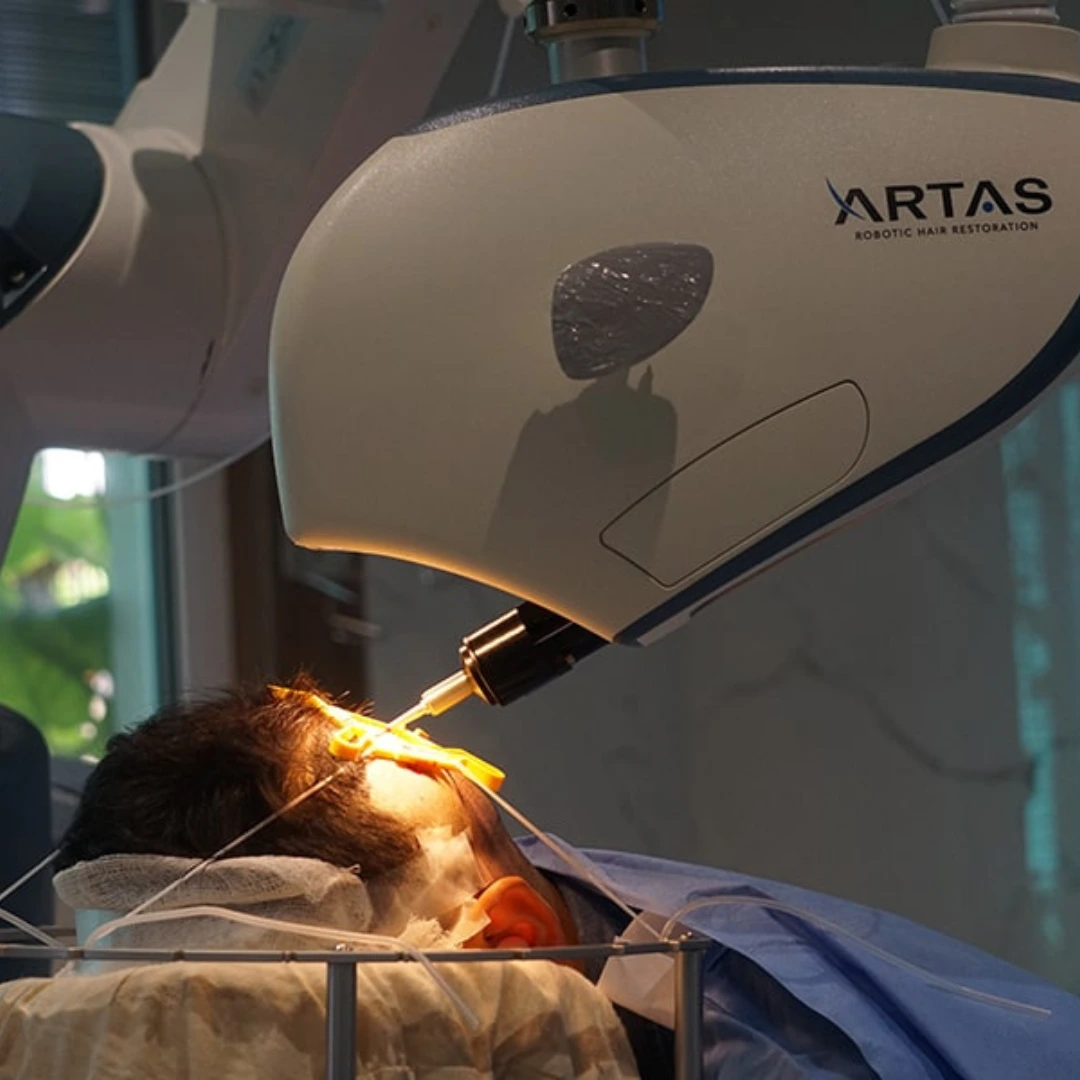
Temple Hair Transplant (Norwood Case)
Temple recession is a key indicator used to diagnose the stage of male pattern baldness on the Norwood Scale. It is one of the very first signs that hair loss has begun.
Typically, noticeable recession of the temple points begins in Norwood Stage 2. As hair loss progresses to Norwood Stage 3 and Stage 3 Vertex, the recession becomes much more defined and significant. Accurately identifying your stage allows the surgeon to create a strategic, long-term treatment plan that addresses both your current and potential future hair loss.
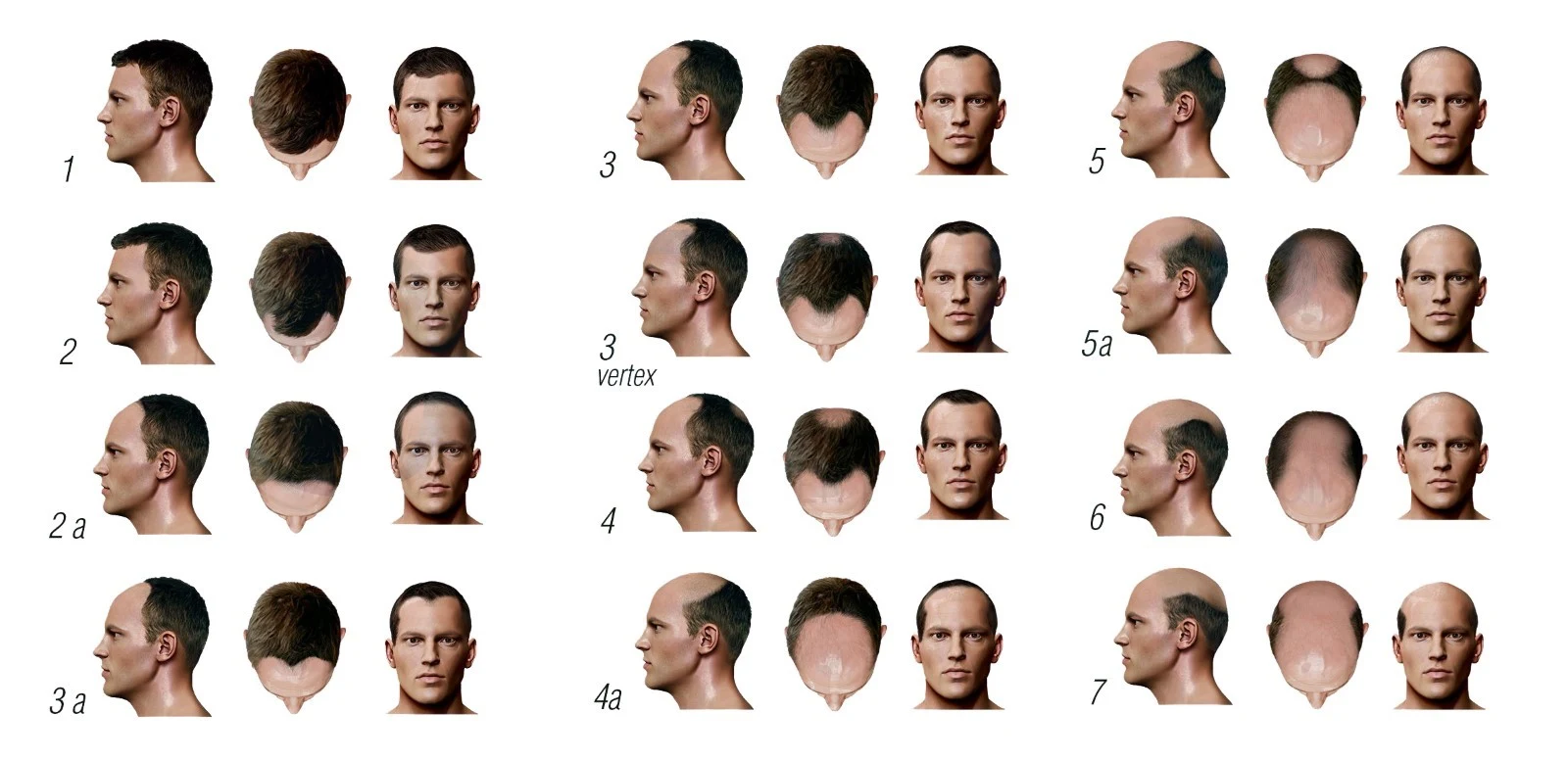
Success Stories of Hair Transplant at Musk Clinic
India's Only Premier Clinic for ARTAS® Robotic Temple Hair Transplant
Experience the next generation of hair restoration with the ARTAS® 9x Robotic System, exclusively at Musk Clinic. This advanced technology eliminates the guesswork and human error of manual procedures. For you, this means a faster, more comfortable experience and results so natural, no one will know you had a procedure done.
Ready to Experience the Future of Temple Point Hair Restoration?
Join hundreds of satisfied patients who have transformed their lives with ARTAS® technology at Musk Clinic.
ARTAS® Clinic in India
Graft Survival Rate
Faster Procedure
Where Do Grafts for Temple Points Come From?
The source of the grafts is critical for achieving a natural-looking temple restoration. Surgeons primarily use hair from specific areas to ensure the texture and thickness are a perfect match.
The ideal source is the permanent donor zone on the scalp (the back and sides), as these hairs are genetically resilient. For the very front of the temple points, surgeons often select the finest single-hair grafts from the nape of the neck or even use beard hair to create an exceptionally soft, natural, and undetectable transition.
What Should You Consider Before a Temple Hair Transplant?
How is Temple Hair Transplant Procedure Performed?
A Temple Hair Transplant is a meticulous procedure that follows four primary steps to ensure a flawless outcome.
Techniques to Provide the Best Temple Hair Transplant in India?
To provide the best Temple Hair Transplant in India, Clinics typically utilize these 2 most popular techniques:
FUE is a minimally invasive technique where individual hair follicles are extracted from the donor area (usually the back or sides of the head) and transplanted to the recipient area. This technique leaves tiny scars that heal quickly, making it popular among patients.
Advantages:
- Less Scarring: FUE leaves minimal scarring at the donor site, making it a cosmetically desirable option for many.
- Faster Healing: Due to the minimally invasive nature, FUE generally boasts quicker healing times.
- Larger Donor Area: Hair follicles can be harvested from a broader area on the scalp compared to FUT.
- Location: Costs may vary slightly depending on the clinic’s location within India. Tier-1 cities might have slightly higher costs compared to smaller towns.
FUT involves removing a strip of scalp from the donor area and dissecting it into individual follicular units for transplantation. This method can yield a higher number of grafts in a single session but leaves a linear scar that requires sutures.
Advantages:
- Cost-effective: FUT is generally less expensive than FUE.
- Faster procedure: For larger grafts, FUT can be a quicker procedure compared to FUE.
What is the Recovery Process After a Temple Hair Transplant?
Let's walk through the healing timeline together to ensure a successful and comfortable recovery.
You can return to most daily activities, but rest is your priority. You'll experience mild swelling and tenderness as your scalp begins its healing journey.
Scabs will form and naturally fall off. We'll provide detailed guidance on how to wash your hair gently during this sensitive period.
The "shedding phase" begins—this is completely normal! The transplanted hairs will fall out, but the follicles underneath remain safe and are preparing for new growth.
New, fine hairs will begin to sprout, marking the start of your transformation. This is when you'll first see the promise of your new look!
You'll notice significant growth and increasing density as your hair continues to strengthen and thicken. The excitement builds!
Your final, spectacular results are visible! The hair will have matured in both thickness and length, giving you the full, natural-looking results you've been waiting for.
How Much is the Success Rate of Temple Hair Transplant in India?
Temple Hair Transplant in India has a high success rate up to 98%. However, the success rate always depends on individual factors, circumstances, and the expertise under which it is performed.
Musk Clinic has a proven record of successful Temple Hair Transplant treatments with great outcomes. With our detailed attention to a patient’s current circumstances and safety measures, we ensure to deliver the best hair transplant solutions with a success ratio of 95-100%.
What is the Cost of Temple Hair Transplant in India?
The cost of Temple Hair Transplants in India is quite affordable compared to that in other developed nations, making it an attractive destination for individuals seeking this procedure. India has gained recognition for offering high-quality Temple Hair Transplant services 5-6 times lesser that meet international standards at a fraction of the cost found elsewhere.
The price of a Temple Hair Transplant in India typically depends on various factors associated with the procedure. Key factors influencing the cost include the number of hair grafts needed to cover the bald area. Each hair graft generally costs varying based on factors such as the clinic’s reputation, the expertise of the hair transplant surgeon, and its location
Musk Clinic is one of the top hair transplants clinics in India, offering the best hair loss solutions in India.
The affordability, combined with the availability of skilled surgeons and world-class facilities, has made us a best place for Temple Hair Transplant, attracting individuals from around the world seeking effective solutions for hair loss.
Know Your Temple Hair Transplant Cost Today!
Factors That Decide the Cost of Temple Hair Transplant in India?
Ethical Considerations for Temple Hair Transplant
Patients deserve ethical care during Temple Hair Transplant procedures. They should expect:
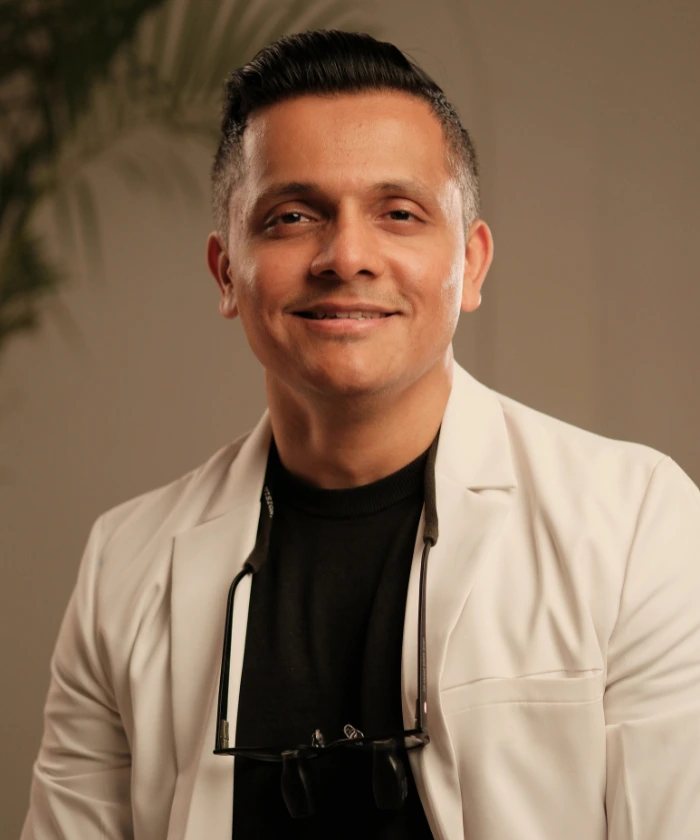
Dr. Anand Shah: The Professional Behind Robotic Hair Transplant with ARTAS 9X
Dr Anand B. Shah, is a board-certified Maxillofacial & Craniofacial surgeon who is highly skilled in cosmetic facial and hair restoration surgery and has exclusively practised the same, internationally and nationally. His career span has been marked with passionate and focused learning, keen and industrious training and in-depth guidance by some of the world’s best leading experts in the field of Hair Restoration. Following his post-graduation, Dr Shah underwent a highly reputed fellowship in Craniofacial Surgery under GCCRI which is affiliated with DCKH (Deutsche Cleft Kinder Hilfe), Germany. It was during his fellowship tenure that Dr Anand developed a keen interest in Hair Restoration Surgery under the esteemed guidance of fellowship director Dr Shyam Sheth.
He underwent a surgical preceptorship in orthognathic surgery from ‘UZ Brussel’ University, Belgium under Dr Maurice Mommaerts.
Read MoreRecognized Physician Memberships

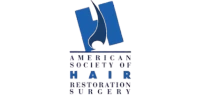

Recognized By
Why Choose Musk Clinic?
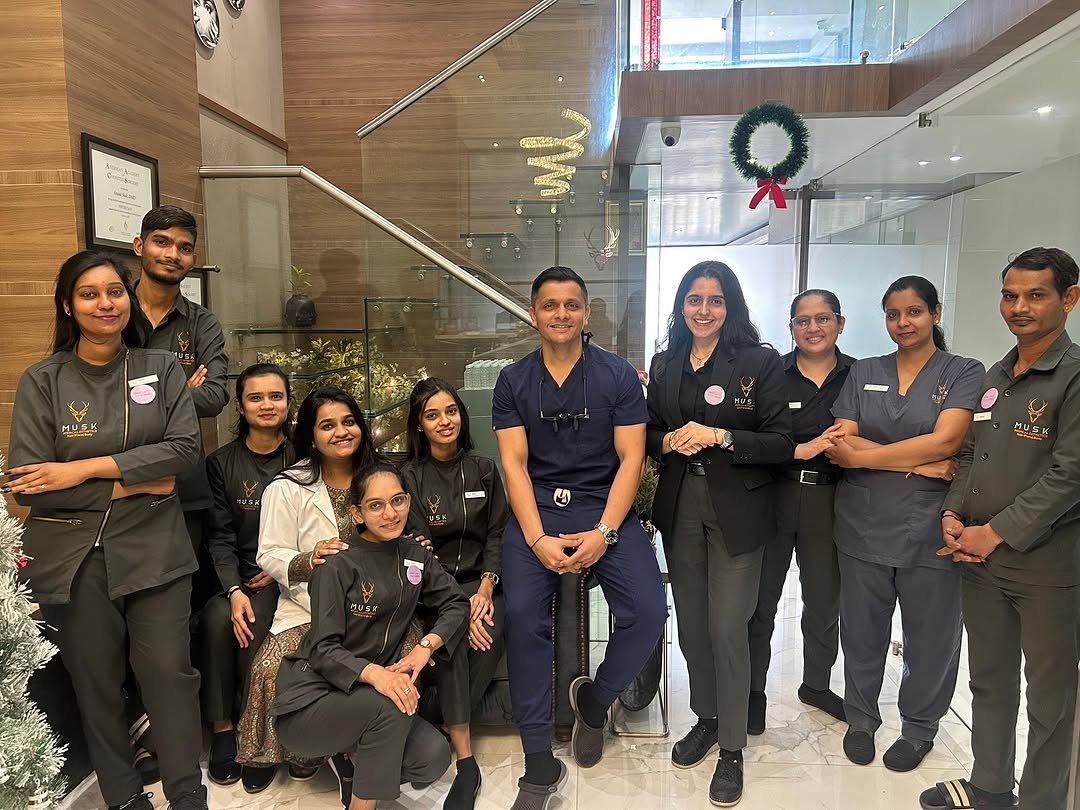
Real People. Real Care. Real Results.
At Musk Clinic, excellence is never a solo effort.
We are a team of skilled doctors, experienced surgeons, certified therapists, and compassionate staff—working together to deliver world-class care in Robotic Hair Transplants, Advanced Skin Treatments, and Body Aesthetics.
With cutting-edge technology and a shared vision of delivering results with care, our team ensures every patient feels confident, comfortable, and cared for at every step of their transformation journey.
When you choose Musk Clinic, you're not just choosing a treatment—you're choosing a team that's committed to your well-being and success.
